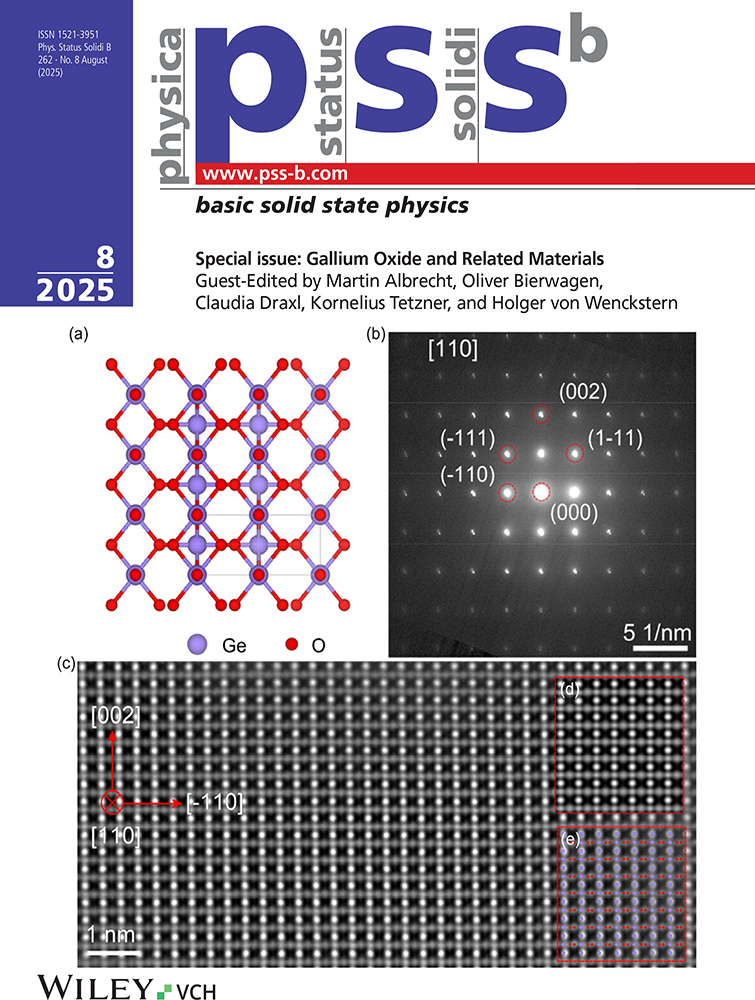Negatively Charged Donor Centers in Ultrathin ZnSe:N Layers
Abstract
Pseudomorphically grown p-ZnSe:N layers being as thin as 100, 20, 10 and 5 nm embedded in ZnMgSSe barriers were investigated by means of photoluminescence and spin-flip-Raman (SFR) scattering spectroscopy. A new donor–acceptor-pair (DAP) band has been observed involving a very shallow donor with a binding energy of (19 ± 2) meV and the well-known N acceptor on Se site. Further evidence for a new donor center is given by transitions in angle-dependent SFR scattering measurements which correspond to an isotropic (donor-like) g-value of (1.49 ± 0.03). The 19 meV donor is interpreted as the negatively charged state of the usually found 52 meV deep donor in ZnSe:N. This is supported by the temperature behavior of the DAP band and, further, by its pronounced appearance for resonant excitation into the barriers quite similar to the behavior of trions.




